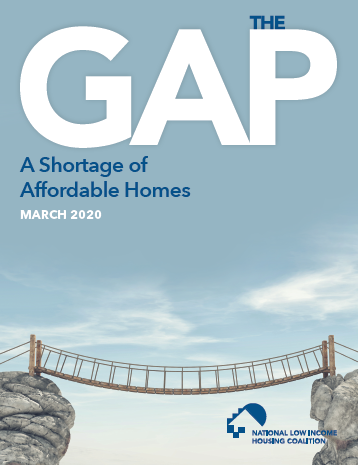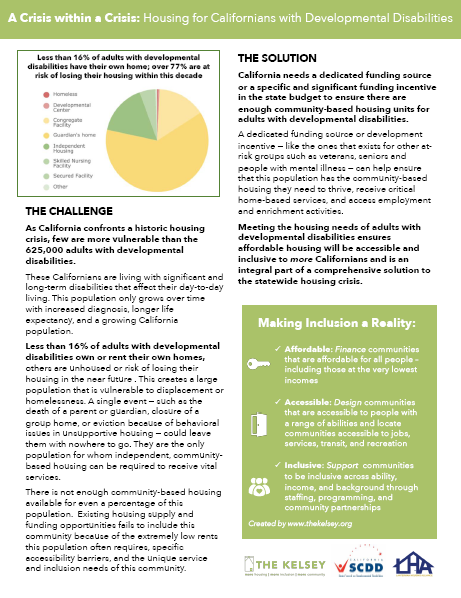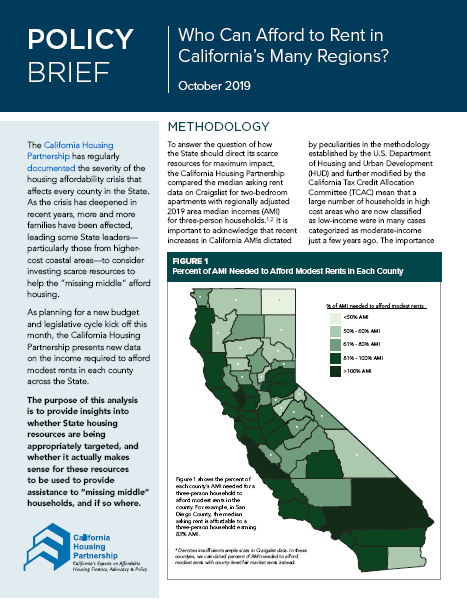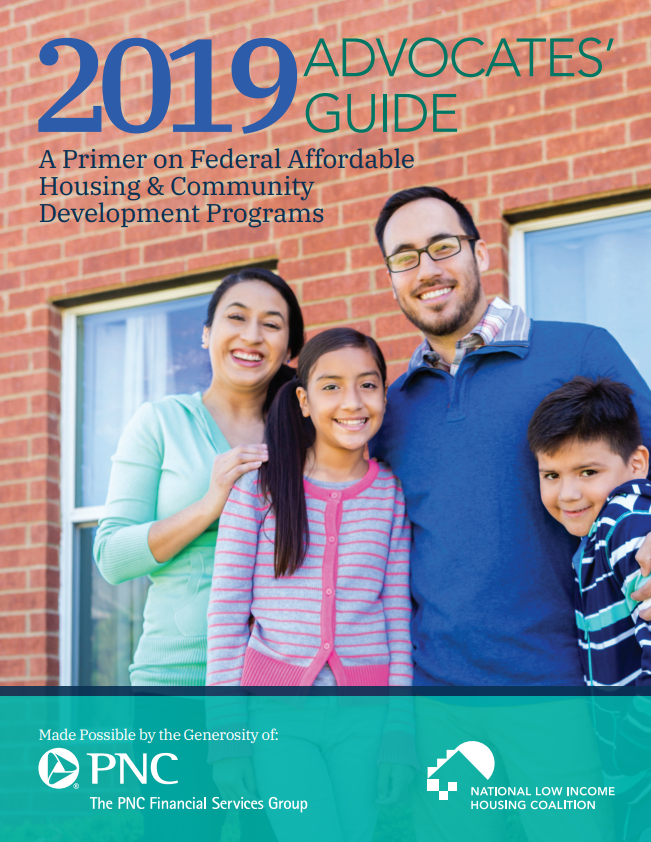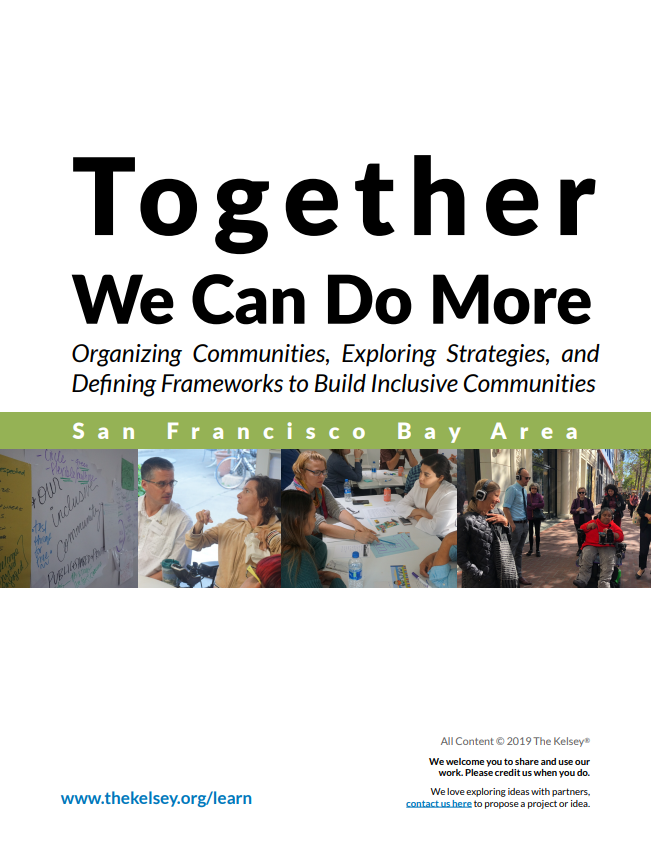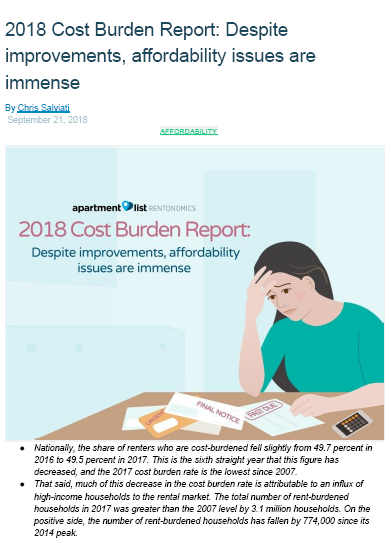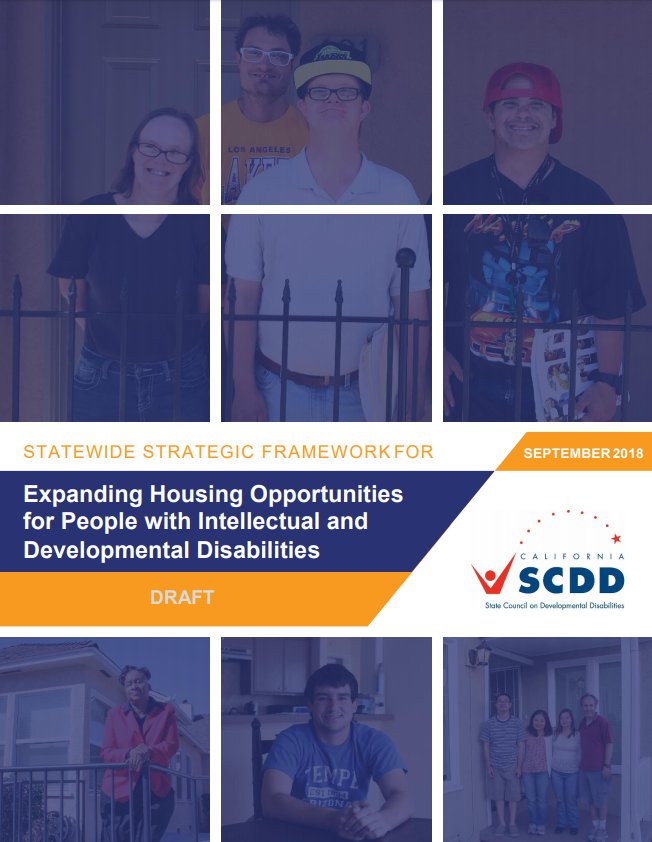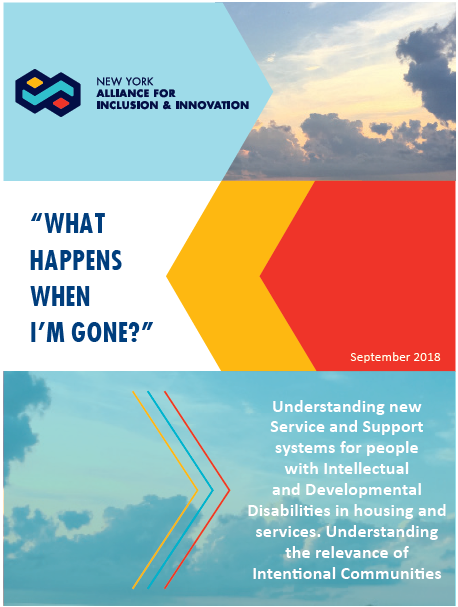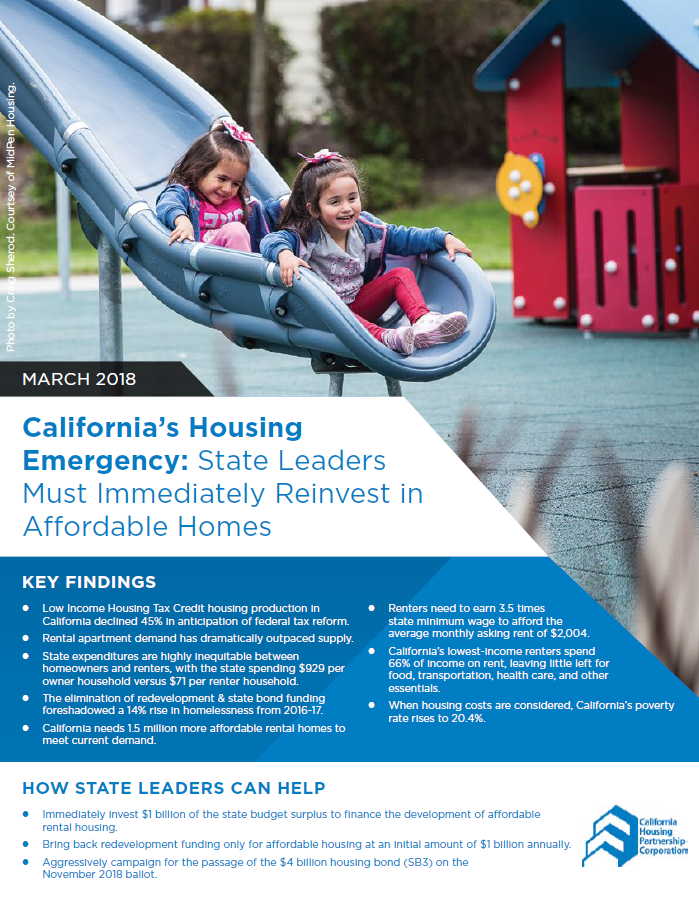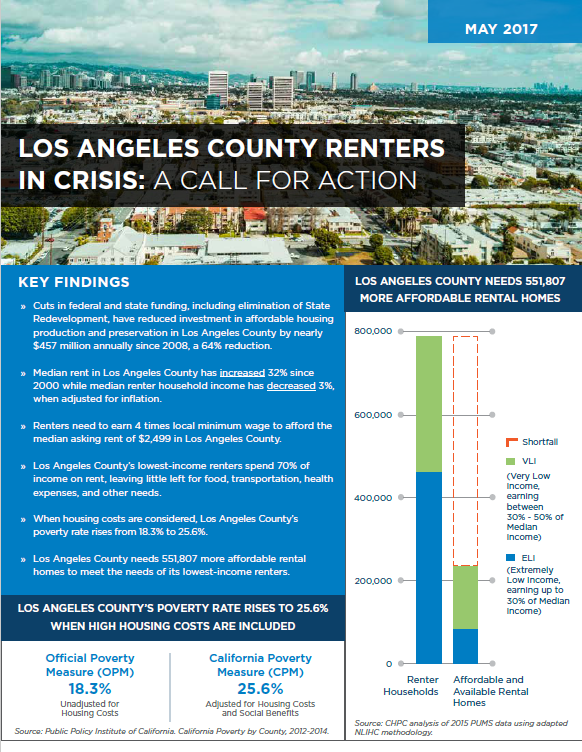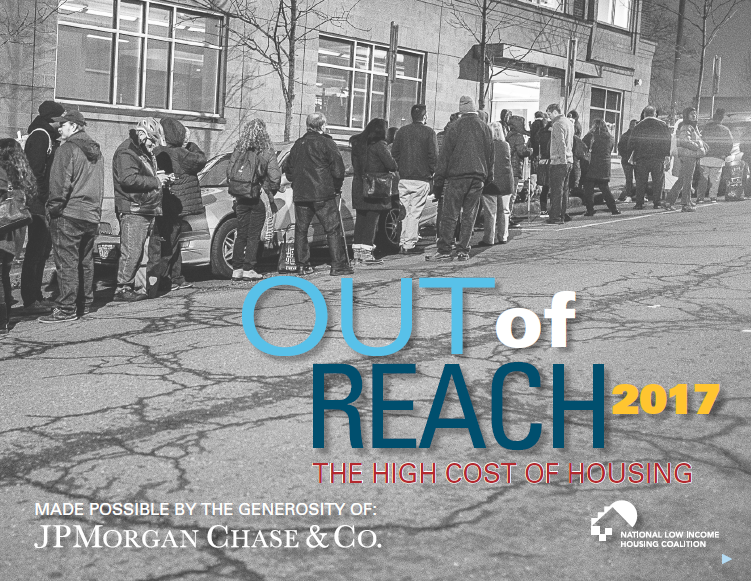RESEARCH
This page catalogs current research applicable to addressing the need for safe, healthy, and affordable
housing for people with developmental disabilities.
The Gap: A Shortage of Affordable Homes, March 2020
The Gap: A Shortage of Affordable Homes, a new report released today by the National Low Income Housing Coalition (NLIHC) and the Southern California Association of NonProfit Housing (SCANPH), finds a national shortage of nearly seven million affordable and available rental homes for extremely low-income (ELI) renter households, those with incomes at or below the poverty level or 30% of their area median income. There are just 36 affordable and available rental homes for every 100 ELI renter households nationwide. Seventy-one percent of the poorest renter households are severely housing cost-burdened, spending more than half of their incomes on housing, with little left over for other basic necessities.
A Crisis within a Crisis: Housing for Californians with Developmental Disabilities, November 2019
As California confronts a historic housing crisis, few are more vulnerable than the 625,000 adults with developmental disabilities. These Californians are living with significant and long-term disabilities that affect their day-to-day living. This population only grows over time with increased diagnosis, longer life expectancy, and a growing California population. Less than 16% of adults with developmental disabilities own or rent their own homes, others are unhoused or risk of losing their housing in the near future . This creates a large population that is vulnerable to displacement or homelessness.
2013 - 2019 CATALOG OF RESOURCES FOR PERSONS WITH INTELLECTUAL AND DEVELOPMENTAL DISABILITIES, November 2019
CSH has created products for people interested in learning about supportive housing options for persons with Intellectual and Developmental Disabilities (IDD). While the products are designed for everyone, specific documents are designed to help people with different needs and languages. They have created general documents describing the model in Spanish, Polish, and English language. For those with difficulty reading, they have created videos in English. For our best documents, they have also offered the videos with English and Spanish captioning to follow along. In creating the video series, CSH has also recognized that it is a major system change for persons with DD to be moving into their own apartment. CSH uses videos of individuals living independently to help create and share the image of persons with DD living on their own to help people imagine themselves making that next step.
POLICY BRIEF: Who Can Afford to Rent in California’s Many Regions? October 2019
The California Housing Partnership has regularly documented the severity of the housing affordability crisis that affects every county in the State. As the crisis has deepened in recent years, more and more families have been affected, leading some State leaders—particularly those from highercost coastal areas—to consider investing scarce resources to help the “missing middle” afford housing. As planning for a new budget and legislative cycle kick off this month, the California Housing Partnership presents new data on the income required to afford modest rents in each county across the State. The purpose of this analysis is to provide insights into whether State housing resources are being appropriately targeted, and whether it actually makes sense for these resources to be used to provide assistance to “missing middle” households, and if so where.
2019 ADVOCATES’ GUIDE: A Primer on Federal Affordable Housing & Community, April 2019
Development ProgramsEvery year, the National Low Income Housing Coalition publishes the Advocates’ Guide to Housing and Community Development Policy to educate advocates of all kinds about the programs and policies that make housing affordable to low-income people across America. Whether you are a new employee at a housing agency, a student in an urban planning program, or a seasoned affordable housing advocate looking for a refresher on key programs, this book will give you the overview of housing programs and advocacy tools you need to be a leader in the affordable housing movement.
Together We Can Do More: Organizing Communities, Exploring Strategies, and Defining Frameworks to Build Inclusive Communities, March 2019
Funded by the Chan Zuckerberg Initiative, The Kelsey embarked on a nine month organizing and predevelopment process. With stakeholders from across the Bay Area and insights from national leaders, we thought through the factors driving the disability housing challenge and what new solutions could look like. The goal of this report is to educate readers on factors driving the shortage of affordable, accessible, and inclusive housing and explore solutions and strategies. They focus on identifying mechanisms that promote disability inclusive housing and sharing innovative, scalable, and sustainable ideas that can be applied in all communities.
THE GAP: Lowest Income Renters Face Most Severe Shortage of Affordable Homes, March 2019
The magnitude of the housing crisis is documented in a new reports that show the shortage of housing that is affordable and available to the lowest-income renters. As housing supply has lagged, rents have risen faster than renters’ incomes over the last two decades. The National Low Income Housing Coalition has published its annual analysis of recent data, titled "The Gap," to highlight the urgency of prioritizing resources for the lowest income renters. The fastest growing segment of economically vulnerable people at risk of falling into homelessness are those defined as Extremely Low Income (ELI), which are households with incomes that fall below the poverty line or below 30% Area Median Income (AMI). SCANPH's snapshot of the data specific to the Southern California region is presented in the report below.
2018 Cost Burden Report: Despite improvements, affordability issues are immense, September 2018
Although the American Although the American economy has experienced nearly a decade of continuous expansion, the gains of recent years have not been evenly distributed across the country’s population. Virtually half of renter households are cost-burdened by their housing costs, spending more than the recommended 30 percent of their incomes on rent.
Statewide Strategic Framework for Expanding Housing Opportunities for People with Intellectual and Developmental Disabilities (DRAFT), October 2018
With the State of California in the midst of an affordable housing crisis, the Lanterman Housing Alliance (LHA), State Council on Developmental Disabilities (SCDD), and Corporation for Supportive Housing (CSH) launched an initiative to create a Statewide Strategic Framework to expand housing opportunities for people with intellectual and developmental disabilities
“What happens When I’m Gone?,” October 2018
Understanding new Service and Support systems for people with Intellectual and Developmental Disabilities in housing and services. Understanding the relevance of Intentional Communities.
California’s Housing Emergency: State Leaders Must Immediately Reinvest in Affordable Homes
CHPC’s 2018 Statewide Housing Need Report takes a look at the correlation between the state’s disinvestment in affordable homes and the rise of homelessness statewide. It also highlights inequities in state spending on homeowners vs renters as well as the ever-growing burden low-income people face under high housing costs.
DD System Overview, March 2018
Association of Regional Center Agencies (ARCA) had drafted the attached paper meant to be a brief overview of our service system. This document provides a summary of how the system supports the over 300,000 Californians with developmental disabilities to live, study, work, and engage in community life, supported by a partnership between independent non-profit “regional centers” and the local businesses that serve them.
Sequestering Savings From the Closure of Developmental Centers, January 2018
The Supplemental Report of the 2017‑18 Budget Act requires the Legislative Analyst’s Office to analyze a proposal about sequestering potential savings from the closure of Developmental Centers (DCs) and keeping the savings in the Department of Developmental Services (DDS) community services system. This report addresses that requirement. In this report, we discuss the two main potential sources of savings—(1) net operational savings and (2) increased revenues from the sale or leasing of DC properties.
Priced Out, December 2017
The Priced Out report, co-authored by TAC and the Consortium for Citizens with Disabilities Housing Task Force, documents the nationwide housing affordability crisis experienced by people with disabilities. In 2016, millions of adults with disabilities living solely on Supplemental Security Income (SSI) found that renting even a modest unit in their community would require nearly all of their monthly income. In hundreds of higher-cost housing markets, the average rent for such basic units is actually much greater than the entirety of an SSI monthly payment.
Los Angeles County Renters in Crisis, May 2017
SCANPH and California Housing Partnership Corporation have released detailed reports describing the affordable housing crisis facing lower-income renters in five Southern California counties: Los Angeles, Riverside, San Bernardino, Orange, and San Diego. SCANPH contributed on the policy recommendations outlined in the reports.
Out of Reach, February 2017
Out of Reach documents the gap between renters’ wages and the cost of rental housing. The report’s Housing Wage is the hourly wage a full-time worker must earn to afford a modest rental home without spending more than 30% of his or her income on housing costs. It is based on HUD’s Fair Market Rent (FMR), which is an estimate of what a family moving today can expect to pay for a modest rental home in the area.

